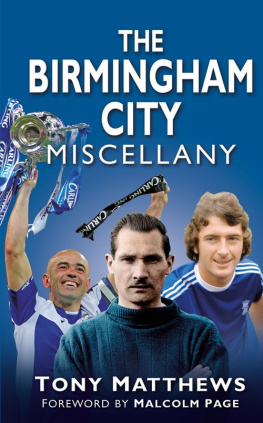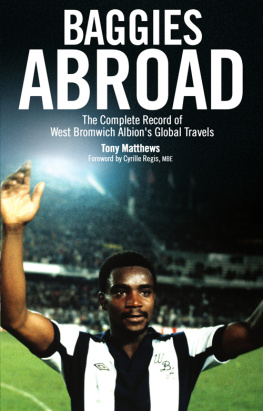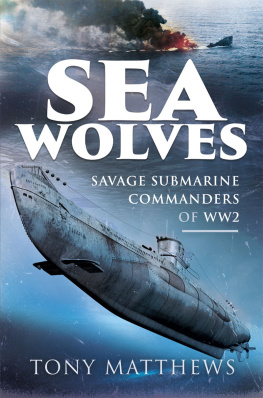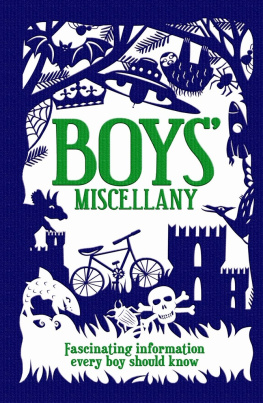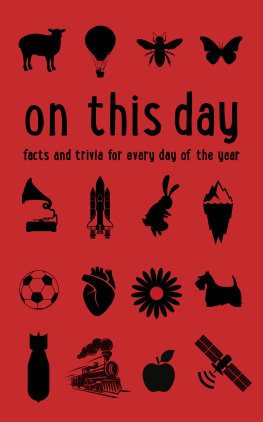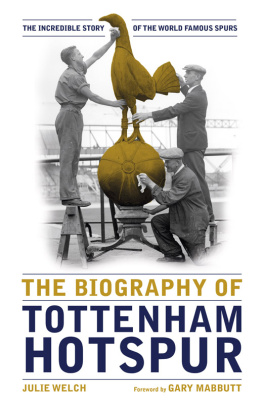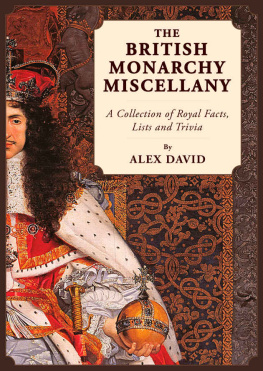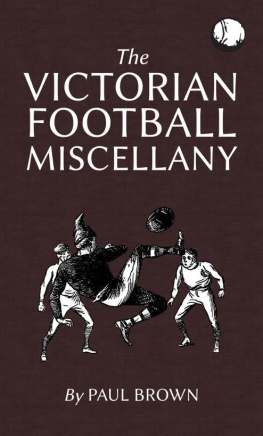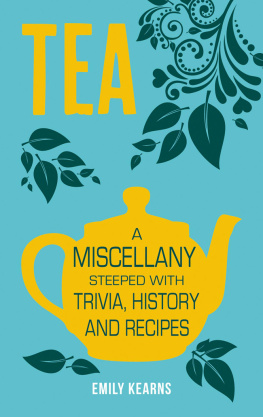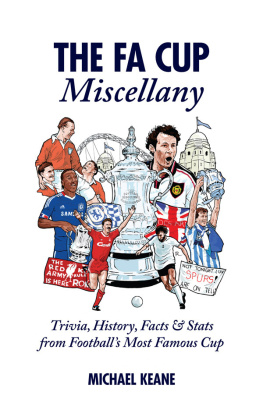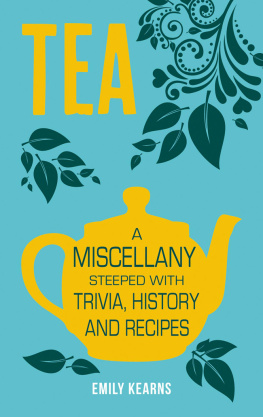

I d like to say a special thank you to two ardent Blues supporters, Ivan Barnsley and Dave Drage, whose joint archive record of Blues facts, figures, stats and general knowledge has once again proved invaluable. I would also like to acknowledge the contribution made by several other Brummie fans who, in their own time, have filtered through bits of information which have been included in this book thanks a lot gents, you know who you are from just talking football!
A huge thank you goes out as well to former player Malcolm Page for penning the foreword, to Michelle Tilling and Richard Leatherdale at The History Press, and to my darling wife, Margaret, who, although enjoying a wonderful lifestyle in sunny Spain, has never really complained about me tip-tapping away on the computer keyboard for hours (and sometimes days) on end. Its all been worthwhile though I think!
Tony Matthews
CONTENTS
by Malcolm Page
W hen I was growing up I was, like all of my mates, football crazy. I would kick a ball around anywhere in the lane, in the playground, down the orchard, up in the village green, in fact all over mid-Wales and this would be every single day, no matter what the weather was like. I supported Birmingham City and my idol was the great goalkeeper Gil Merrick; although I had only seen him play once in the FA Cup final, I said to myself, Im going to be a professional footballer when I leave school. And to my sheer delight, thats what happened.
While playing for Radnorshire and District Boys in 1962, I was spotted by Birmingham City chief scout Don Dorman who invited me down to St Andrews for a trial. I obviously did well and in July 1962 I was signed as an apprentice, turning fully professional two years later. I made my first-team debut against Everton at Goodison Park in February 1965, helped the Blues regain their top-flight status in 1972 and appeared in three FA Cup semi-finals, unfortunately losing them all, one in the very last minute of extra time!
During my career with Blues, I served under seven different managers, occupied virtually every outfield position and played with and against some great footballers. I visited places I never dreamed of seeing, the sort of places Id only ever read about, and I certainly got involved in many incidents, some good, some bad, but I would have never swapped my life in football for anything else.
This book, compiled by one of the most prolific football writers I have ever known, Tony Matthews, is packed full of interesting facts, records, statistics and events, snippets about players and managers and much, much more. I was absolutely chuffed to read about several events, incidents, games and competitions involving myself as a Blues player there are some things I never thought were made public! This is a great book to read and enjoy I have.
Malcolm Page, 2012
Malcolm Page scored 10 goals in 391 senior appearances over 19 years for Birmingham City, during which time he also won 28 caps for Wales.
T his book is nothing like the others I have written/compiled on Birmingham City this is an-easy-to-read mini encyclopaedia about the club, its players, managers and opponents covering the period from 1875 to 2012. And, although out of the Premiership right now, the Blues are still marching on, still going strong, and will do so for many years to come.
From the day the club was first formed (as Small Heath) headlines have been made, some for good reasons, some for bad. At the outset players turned out for nothing, simply because they loved football. As time progressed, however, a League team was assembled with a manager and star players, some of whom became internationals.
A fine ground St Andrews was built early in the twentieth century and is now a smart, 30,000 all-seater stadium. Some great games have taken place there and thousands of avid Blues supporters have cheered their heroes to victory in some very important games down the years. I have tried to cram everything into this pocket-size almanac and Im sure you will find it exceptionally interesting. Read about the forty-seven players used in one season by manager Barry Fry, the Blues 1961 trip to America, Citys defensive wall, Jack The Lad Jones, Diamond Fred Wheldon, the Blues Man Mountain and much, much more besides.
There is a common purpose surrounding this book its one for all Blues supporters to enjoy. You will read about those superb wins and all the heavy defeats, remember great players, relive three Wembley triumphs, recall promotion and cringe at relegation.
Tony Matthews, 2012
The club began life as Small Heath Alliance in 1875, formed by a group of young cricketers who attended the Holy Trinity Church in Bordesley Green.
After three seasons in the Football Alliance, the club became the first ever champions of Division Two in 1893 (but not promoted). However, this was achieved as runners up 12 months later, but it was up and down after that until the team settled in the First Division in the early 1920s. The Blues then spent all 18 inter-war years in Division One. They reached the FA Cup final in 1931, losing 21 to neighbours West Bromwich Albion and in 1939, saw a record crowd of 67,341 assemble at St Andrews for a cup tie with Everton.
Halfway through the hostilities, in the summer of 1943, the name City was added to Birmingham. The club spent only two seasons in the top flight between 1946 and 1955, yet twice almost reached the FA Cup final, losing at the semi-final stage in 1946 and 1951.
In truth, the modern history of the club only really began to be written when City gained promotion in 1955, finished sixth in their first season back in the top flight (1955/56) which was the clubs highest league position at that time, and finished runners up once more in the FA Cup, beaten this time by Manchester City.
Also in 1956, City became the first English club to play a major European competition, entering the inaugural Inter-Cities Fairs Cup in 1956, drawing their opening game 00 away at Inter Milan. The Blues went on to reach the semi-final of this competition before losing in a replay to Barcelona. In 1960, the team went one better and made the final where, yet again, they were second best to the Catalan giants, Barcelona lifting the trophy with a 41 aggregate victory. The battling Blues then tried again, and in 1961, after ousting Inter Milan in the semis, they once again reached the final, but fell at the last fence, this time to AS Roma.
The wait for a major trophy finally ended in 1963, when City beat their arch-rivals Aston Villa 31 over two legs in the League Cup final. However, a cycle of relegation and promotion began in 1965, and over the next 25 years Blues bounced up and down between divisions although occasionally the scene lit up with the arrival of a star player or two! Arguably the most notable was Trevor Francis who, as a 16-year-old, scored 4 goals in a league game, represented England and then became the first 1m+ footballer when he joined Brian Cloughs Nottingham Forest in 1979.
Also, some World Cup-winning glamour came to St Andrews in 1979, first when the club was briefly managed by former England chief Sir Alf Ramsey, and then when Blues boss Jim Smith signed the Argentinian defender Alberto Tarantini.
Between the club winning the League Cup in 1963 and being relegated to the Third Division for the first time in its history in 1989, City had ten different managers, including Stan Cullis, Fred Goodwin, Smith and Ron Saunders who had won the League Championship with Aston Villa in 1981.
Next page
